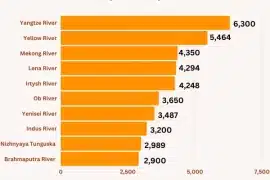In today’s technologically advanced world, drones have emerged as a valuable tool for various industries, including commercial aerial land surveys. However, with the increasing use of drones, there is growing concern regarding the hacking of drones and their malicious exploitation. In this blog, we will explore the potential risks associated with drone technology and discuss the measures that can be taken to protect drones from hacking and malicious activities.
Understanding the Vulnerabilities
Drones, like any other connected devices, are susceptible to cyber threats. They can be compromised through various attack vectors, including hijacking control signals, intercepting data transmission, and even physically tampering with the drone itself. Research conducted by the University of Texas at San Antonio highlighted the vulnerabilities present in drone systems and emphasised the need for robust security measures. More and more regulatory bodies across the globe are taking this seriously and taking remedial measures to ensure that these vulnerabilities are mitigated.
Encryption and Authentication
Implementing strong encryption and authentication protocols is crucial to safeguard drone operations. Researchers from the University of Washington proposed a lightweight cryptographic protocol called “SKID,” which provides secure key establishment and identity verification. By utilising such encryption techniques, drone operators can ensure that the control signals and data transmitted between the drone and the ground station remain secure and confidential.
Network Security Measures
Drones often rely on wireless networks for communication, making them vulnerable to attacks targeting the network infrastructure. The University of California, Berkeley, has conducted extensive research on securing drone networks. They proposed the use of intrusion detection systems, secure network protocols, and frequent network scanning to identify and mitigate potential threats. Employing these network security measures can help in preventing unauthorised access and data breaches.
Anti-Jamming and Anti-Spoofing Techniques
Drone control signals can be jammed or spoofed, leading to loss of control or manipulation of the drone’s flight path. Researchers at Stanford University have developed anti-jamming and anti-spoofing techniques that enhance the resilience of drones against such attacks. These techniques involve the use of advanced signal processing algorithms and GPS-based authentication mechanisms, ensuring the integrity and reliability of drone navigation.
Firmware and Software Updates
Regular firmware and software updates are essential to address vulnerabilities and patch security loopholes in drone systems. A study conducted by the University of California, Davis, emphasised the significance of timely updates to protect against potential cyber threats. Drone manufacturers and operators should maintain a proactive approach in keeping their devices and software up to date to prevent exploitation of known vulnerabilities.
Physical Security Measures
In addition to securing the digital aspects, physical security measures are equally important to protect drones from theft or tampering. The Georgia Institute of Technology has conducted research on drone physical security and proposed techniques such as tamper-proof enclosures, GPS-based tracking systems, and geofencing mechanisms. These measures can deter unauthorised physical access and enhance the overall security of drone operations.
User Education and Training
Ensuring the secure use of drones also requires educating drone operators and users about the potential risks and best practices. The University of Oxford has conducted studies on human factors in drone security and highlighted the importance of user training. By educating operators about secure operational practices, safe flight procedures, and how to identify and report suspicious activities, the overall security posture of drone operations can be significantly improved.
Collaborative Efforts and Regulatory Frameworks
Addressing the security challenges associated with drone technology requires collaborative efforts between industry stakeholders, academia, and regulatory bodies. Research conducted at MIT focused on the development of comprehensive regulatory frameworks for drone security, including guidelines for manufacturers, operators, and policymakers. By fostering collaboration and establishing clear security standards, we can ensure a safer and more secure environment for drone technology.
Key measures in securing drones
Some of the key measures which have been found quite effective in securing drone technologies are discussed here.
Robust Authentication and Encryption Mechanisms
Implementing strong authentication and encryption protocols is crucial to protect drone technology from hacking attempts. By utilising techniques such as secure key establishment and identity verification, drone operators can ensure that only authorised entities can control and access the drone’s systems and data. Strong encryption ensures that the control signals and data transmitted between the drone and the ground station remain secure and resistant to interception or tampering.
Network Segmentation and Firewalls
Segmenting the drone network and implementing firewalls can enhance the security of the overall system. By separating critical components, such as flight control systems and data storage, from the external network, the impact of a potential breach can be contained. Firewalls act as a barrier, monitoring and controlling the incoming and outgoing network traffic, thereby preventing unauthorised access and protecting against malicious activities.
Regular Firmware and Software Updates
Keeping the firmware and software of the drone systems up to date is essential to address vulnerabilities and security loopholes. Manufacturers and operators should actively monitor for updates and promptly apply them to ensure the latest security patches are in place. Timely updates not only protect against known vulnerabilities but also incorporate improved security measures and countermeasures against emerging threats.
Secure Communication Protocols
Using secure communication protocols, such as Transport Layer Security (TLS), can ensure the integrity and confidentiality of data transmitted between the drone and ground station. TLS provides end-to-end encryption and authentication, preventing unauthorised access or eavesdropping on the communication channel. By employing secure protocols, drone operators can mitigate the risks associated with data interception or manipulation during transmission.
Implementing Intrusion Detection Systems
Deploying intrusion detection systems (IDS) can help identify and respond to potential security breaches in real-time. IDS continuously monitor network traffic, looking for patterns or anomalies that may indicate unauthorised access or malicious activities. When suspicious behaviour is detected, the system can generate alerts or trigger automatic responses, such as disabling compromised components or initiating countermeasures. IDS enhances the proactive defence capabilities of drone systems, reducing the risk of successful hacking attempts.
By incorporating these steps into the design, operation, and maintenance of drone technology, we can significantly enhance the security posture of drones and make it increasingly difficult for hackers to exploit their vulnerabilities. However, it is important to recognize that the threat landscape is constantly evolving, and ongoing research, collaboration, and vigilance are essential to stay ahead of emerging risks and protect critical infrastructure.
Author Bio
Chris Patchell is the General Manager and Director of Operations at AVIAN Australia – an aerial land surveying company based in Melbourne, Australia. He is an avid drone enthusiast and is always on the lookout for newer applications of drone technology in the AEC industry. Chris is highly motivated and has a very hands-on approach to things and his goal is to create awareness about drone tech in Australian AEC industries.
On his days off, he is often scouting locations for photogrammetry and laser scanning. These days you’ll probably find Chris around the place using his drones and laser scanners to capture and recreate the real world in 3D space.








